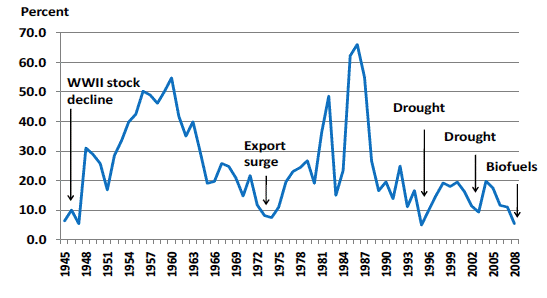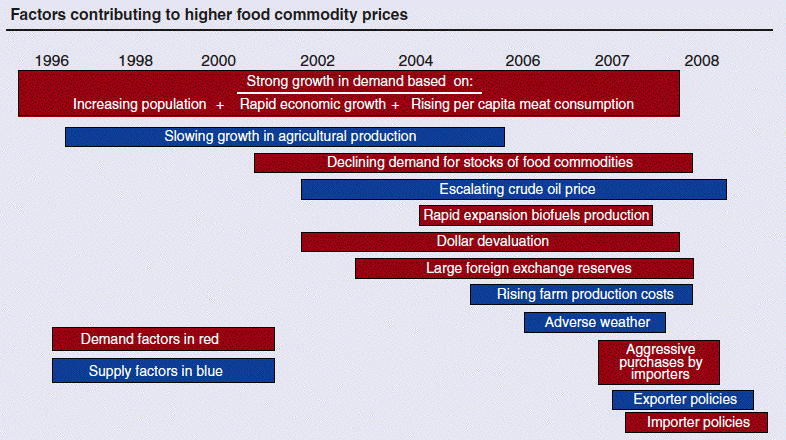"An ethanol-fueled spike in grain
prices will likely hold, yielding the first sustained increase for
corn, wheat and soybean prices in more than three decades, according to
new research by two University of Illinois farm economists. Corn,
an ethanol ingredient that has driven the recent price surge, could
average $4.60 a bushel in Illinois, nearly double the average $2.42 a
bushel from 1973 to 2006, said
Darrel
Good and Scott Irwin, professors of agriculture and consumer
economics. They say price swings stemming from weather or other market
variables could send corn as high as $6.70 a bushel or down to $3,
based on a review of market data dating back to the mid-1900s for a
report titled "
The
New Era of Corn, Soybean and Wheat Prices."
"The extreme low prices in terms of the new era would have been
considered awfully good prices in the old era," Good said. Soybean
prices could average $11.50 a bushel, up sharply from an average of
$6.15 from 1973 to 2006, with swings from $8.20 to $19 a bushel. Wheat
could increase to an average $5.80 a bushel, up from $3.24, dipping as
low as $3.30 a bushel or as high as $10.15. Although the forecasts are
based on Illinois grain prices, Good says increases will likely be
similar on a percentage basis in other grain-producing states.
Irwin says the study stemmed from concerns as farmers tried to get a
handle on rising prices when markets turned volatile in the wake of the
ethanol boom. "There was frustration that they no longer had a
frame of reference," Irwin said. "This is our first effort to try to
provide some perspective on what might be high and what might be low,
with all of the caveats about how difficult that is to do."
Research revealed just two earlier lasting increases in grain prices.
The first came after World War II, when price controls were lifted and
post-war rebuilding began. The second lasting increase began in 1973,
sparked by shifts in exchange-rate policies, massive grain purchases by
the former Soviet Union and a period of escalating energy prices and
more rapid inflation. Good says the dawn of the new era mirrors the
earlier ones, driven by the growth of ethanol and accompanied by higher
inflation and production costs that have been permanently inflated.
The study forecast average prices for the new era based on increases
between the World War II and post-1973 eras, which ranged from 79
percent for wheat to 134 percent for soybeans. It also accounts for
fluctuations as the new higher prices take hold, setting a range of
possible highs and lows based on data from the first five years of the
earlier eras. Irwin says the
new
price era could easily last two or three decades, sustained by
corn prices that are now tethered to near-record gasoline prices
because of ethanol. "The key is what happens in our crude oil and
energy markets," he said. "The risk on the downside is technological
breakthroughs that would dramatically reduce oil consumption, lowering
the whole price structure. If anything, though, the risk is on the
other side. We likely are going to continually be bumping into demand
for crude-oil production that we can't easily get above."
Good says new era prices would not be affected by a shift from ethanol
to another fuel additive made from crops, such as switchgrass. Finite
land available for production would continue to drive up prices for
other grains, just as corn has raised prices for soybeans and wheat.
"We would have to steal land away from corn to grow a different
energy-related crop, so now you have that competition again," Good
said. Irwin says food costs have likely seen the worst of the shift to
higher-priced grain after posting 5 to 6 percent increases this year.
But he warned that commodities account for just 20 percent of food
costs, so prices could still rise to cover labor, transportation or
other expenses.
Good and Irwin say Illinois farmers posted record earnings in 2007, and
likely will again this year. But profits will ultimately dip back to
historical levels of roughly $50 to $60 an acre as land and production
costs rise to keep pace with new era prices.
"The real winners in this are landowners,"
Irwin said. "If history is any guide, we will see every ounce of the
operating margin bid into land and cash rents."
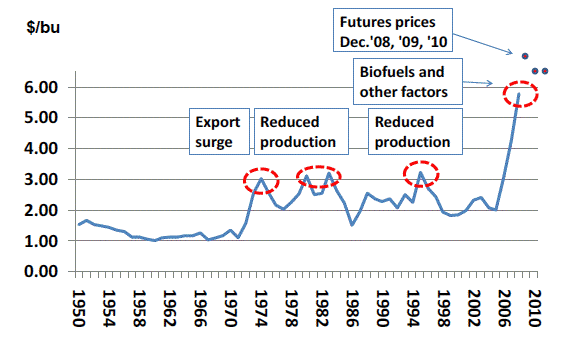
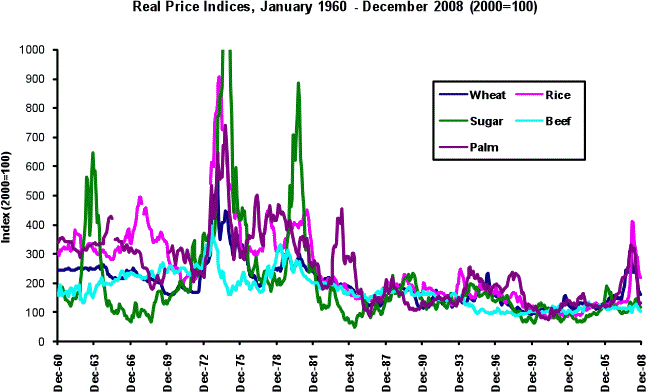


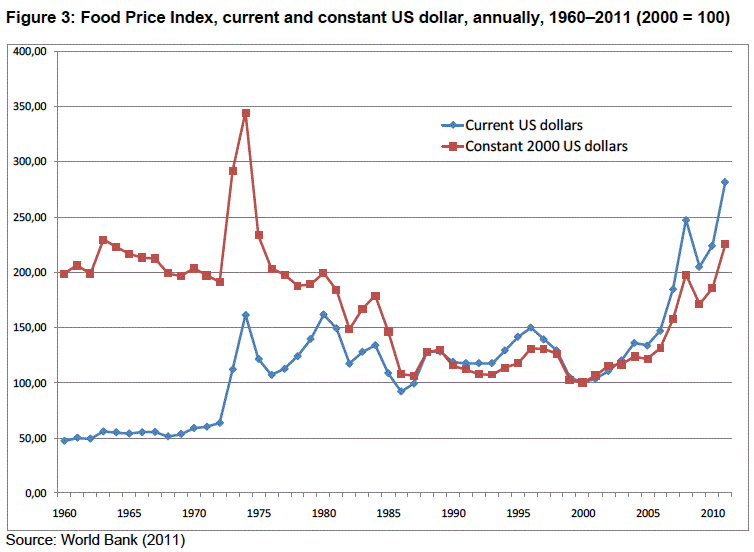 (from CFS: HLPE (op cit., 2011)
p. 21)
(from CFS: HLPE (op cit., 2011)
p. 21)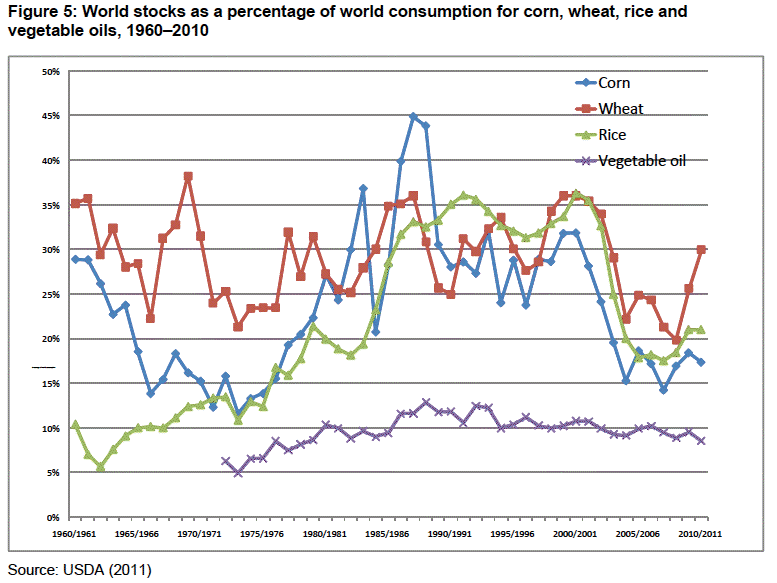 from CFS: HLPE (op cit., 2011) p. 28)
from CFS: HLPE (op cit., 2011) p. 28)